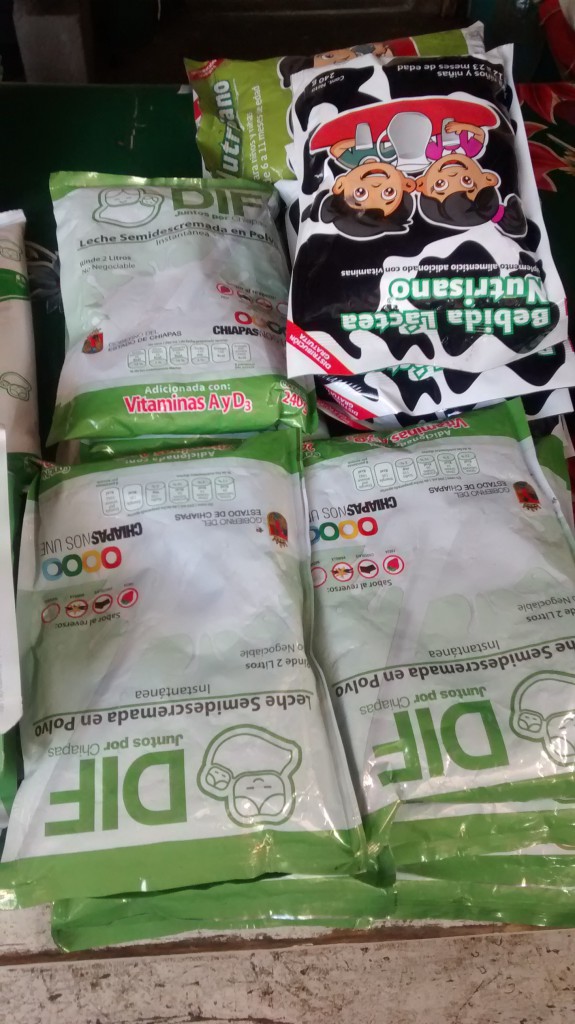As I sat on a bench to wait for a friend, I struck up a conversation with an indigenous woman holding a baby. She was curious about what I was doing and wanted to know about my study, so I began to speak of my questions regarding food aid. When I got to milk, she confirmed that “people don’t drink milk”. She went on: most people in indigenous communities don’t drink milk, but some who receive government aid may drink what they receive. However, she said that government food aid, or “despensas”, are met with the suspicion that they may be the government’s way to try to make people ill. Given the history and political context of Chiapas, the distrust is understandable.
An idea crossed my mind – was it possible that the distrust is compounded by negative reactions to the foods dispensed? For example, if lactose intolerant folks experience discomfort upon drinking government-issued milk, it might make their hypothesis more convincing.
Unfortunately, my friend arrived and the conversation was cut short. I wasn’t able to probe further but it was clear that according to this woman, despensas are not broadly welcomed, at least not for direct consumption. What many do is sell items on the market, as evidenced in the pictures below. I took these at the San Cristobal market, where stands selling “not for sale” government foods are a common sight.
From what I’ve learned so far, despensas typically contain fortified tuna, instant soups, canned tomato puree, oil, sugar, rice, simple fortified cookies, and fortified milk. I conducted a lengthy interview today with the owner of my hostel and her impression of the general acceptance of despensas was different. On the other hand, she converged on the question of milk in indigenous communities – it is not widely consumed.
I’ll leave you with a compelling picture she painted of the changes underway. I asked her to create an image comparing a typical child’s post-weening diet in 1950 and 2016. Instead, she created two images. In 1950, children in San Cristobal and indigenous communities were drinking atol and pozol; in 2016, children in San Cristobal are drinking milk, and children in communities are drinking soda.




